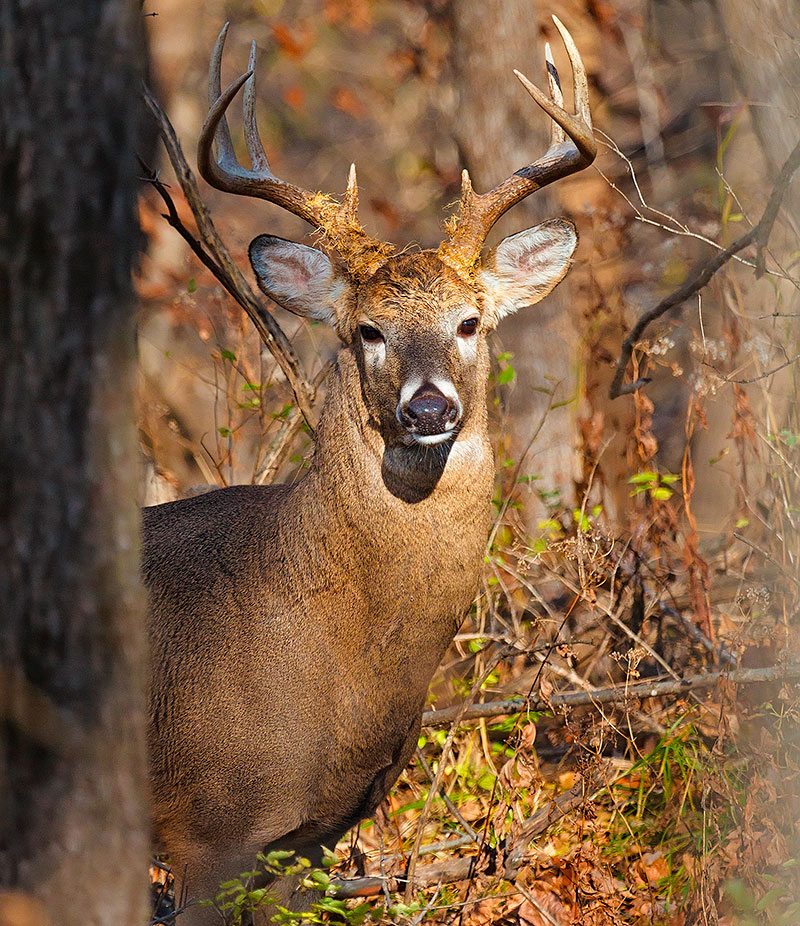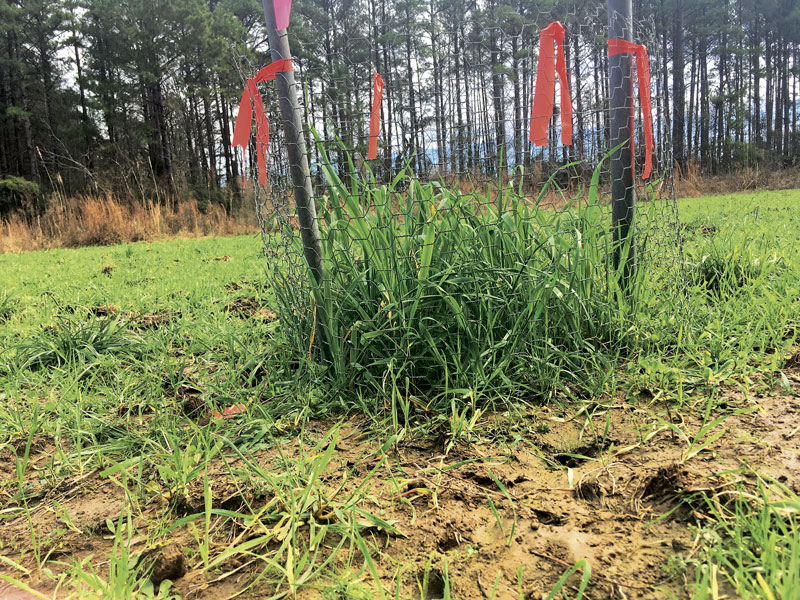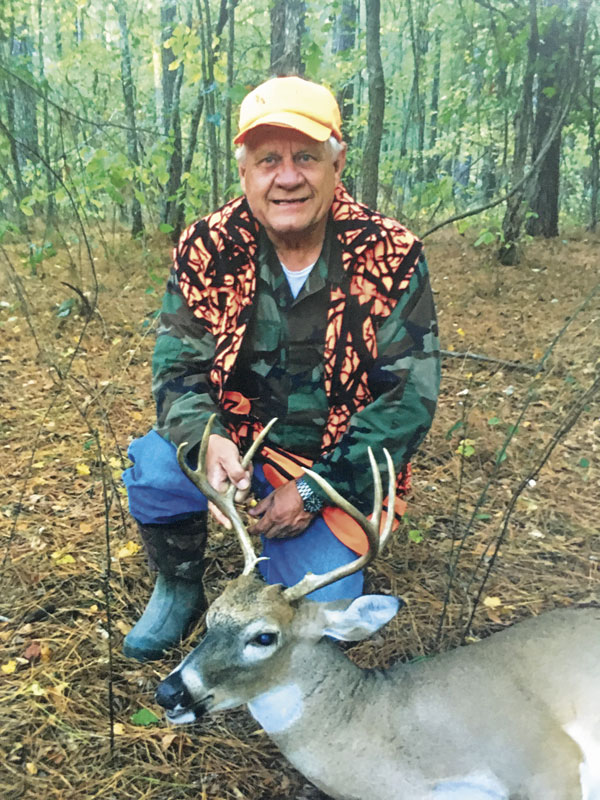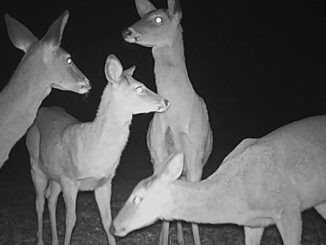 Lessons of what went right and what went wrong help future success
Lessons of what went right and what went wrong help future success
When we lived in Baton Rouge years ago, I would get an annual call from a national deer magazine and the caller always asked the question, “How was your deer season? Did you kill a deer?” I suppose they were hoping that I would answer that I did not kill a deer so they could respond by telling me if I read their magazine the odds of killing one would greatly increase.
The 2022-23 deer season was quite challenging and perplexing. The common theme was that we are not seeing the deer we always do and I cannot figure out their movements.
Generally, deer movement is associated with two activities, feeding and breeding. When there is a consistent period of winter weather, deer activity is good and a hunter can determine where he needs to be and what he needs to be doing to intercept them. But when the temperatures rise above 70 and into the eighties during late November, December and January, the challenge is on.
It is a given these days that most hunters depend on feeders and food plots to attract deer, but with the appearance of CWD in the state, the feeding will be eliminated should diseased deer be found in an area. That leaves management of food plots and forests as the two ways to use the food source to attract deer.
Increase the mast
Unfortunately, pine timber management is the emphasis in our Louisiana forests and a dominant stand of pine timber doesn’t do much for a deer herd, other than that thermal cover to lay up in. Hunters who lease timber land for deer hunting do not have a say in forest management, but I am constantly telling landowners who like to deer hunt to increase the oak and other mast tree component on their landscape. Food plots help to some extent, but it takes time and money for this activity. It also requires Mother Nature to help with the soil moisture. Many like to plant in September, but this past year it was a dry month. I planted in mid-October and soil moisture was still not good, but I was able to grow green patches. Unfortunately, the abundant deer herd in our area of East Feliciana Parish literally ate them up. On one of the larger patches I top dressed with another 50 pounds of wheat seed, which sprouted and produced 4-6 inch grass stems that were soon devoured by the thundering herd. As soon as the 2023 rains diminish I will reseed again with some clover and chicory and see if that will make a crop.

Generally I plant with a wheat/clover mix but with high deer numbers to deal with I may have to rethink what to plant. Oats will grow faster than wheat and some say that the oats tolerate heavy browsing better than wheat. I have had oats in patches in the past and they grew and produced seed heads, which to me is important because I want something on the landscape in the spring for turkeys and songbirds. This is definitely an item to put on my “do something different” list for next season, find a seed mix that will tolerate heavy browsing.
One thing I did right was hunting with my good friend Ken up in Bossier Parish when the early primitive season opened. I always put together a rut prediction for Louisiana Sportsman magazine and this year my prediction was for an earlier rut in Area 2 than last year.
Always look
We hunted on the afternoon of the first Monday and saw a few deer, but nothing like we normally see. The next morning I did see a racked buck at 300 yards working a scrape and hooking overhead branches. This made me feel good and that my mindset that bucks would be beginning to scrape and look for does was correct. That afternoon, Ken shot at 5 p.m. and texted he had shot a buck, but could find no blood. I went to meet him and in about 15 minutes we found the dead seven 7-point about 75 yards away from where it had stood. Some hunters may have not even gone to look since there was no blood, but Ken is a good shot and knew he had hit the deer. So this is a lesson here for all deer hunters, always look after you shoot.

Ken’s deer was a 3 ½-year-old piney woods buck and of course, I had to look at the stomach. Nothing but acorns and a little browse, no corn at all despite the fact that the deer was shot where corn was readily available. Now we have an explanation for why we were not seeing the deer we normally see. The acorn crop in the woods was exceptional and deer always choose acorns over the corn. The lesson here for next year is simple, when acorns abound, leave the feeders and hunt the woods.
To finish off my primitive hunt tale, the next morning was again slow and I had told Ken I needed to stop hunting around 9:30. At 9 a.m., a 1 ½-year-old spike came out at 50 yards, walked across the right of way and made a scrape. That was nice, I thought, and was thinking my hunt was over when I saw movement down the right of way. Binoculars revealed it was the buck I had seen yesterday and this time the buck was at 200 yards. The buck was working a scrape; it stopped the pawing and began walking my way. My first thought was that is a shot I can make with my 444. Before coming up on this trip I had shot the rifle at 100 and 175 yards so I was confident with my rifle. The buck turned and crossed the right of way. At 185 yards I shot and it dropped in its tracks, a nice 4 ½-year-old piney woods 8-point. Hunting the early scraping period of the rut with a sighted-in rifle; give me two check marks for doing something right.
My next was again in Area 2, this time with my old retired wildlife buddies on our annual “Old Farts Hunt in Union Parish.” This is one of those “put brown down” type hunts so that people can go home with some deer meat. This time I was using my Winchester 308 that I had also sighted in. An adult doe came out on the right of way heading for the oak drain. I shot and the doe whirled and ran back into a dense three year old cut-over; blood on the ground revealed a hit but the tracking would not be easy in this thick mass of vegetation. Larry, our host, arrived with old Wex, a renowned tracking dog, and in five minutes Wex was standing over the deer. Another good lesson is to have a tracking dog available when the cover is heavy or the blood trail slim!

Thin the herd
Our season in Area 4 opened, but the temperatures were mild and the rut was not on but deer were moving around and feeding. I was hunting the second evening of the gun season when right before dark, movement caught my eye and a buck stood on the edge of the food plot. I glassed it with my binoculars and the .308 dropped the 135-pound 3 ½-year-old 5-point in its tracks. Now some may have passed on it thinking that it would be bigger but I promise you on this pine dominated habitat, it would never be a 120 class buck. The nutrition is just not there for it to happen. I have learned this from our years of data collection on this property. So put another check in the something I did right column this season.
The unseasonably warm weather was a problem for hunters in Area 4 during the first breeding period in December. There was a three day period when a cold front brought in some very nice hunting weather and some good bucks were harvested here in East Feliciana and in St. Helena Parish. I had a nice 6-point that I aged to be 3 ½ come out on one of the evenings and I watched it for 30 minutes and let it walk off. Another 3 ½-year-old 6-point that was smaller than the one I passed on wasn’t so lucky when it came out on a cool misty afternoon at 4 p.m. in late January; this low end adult was my last buck for the season and may have been one of the deer responsible for eating up my green patch. During the last week of primitive I tried hard to kill an adult doe and further reduce deer numbers, but the weather was too hot. Ok, give me a negative mark for not doing it; my biologist friends would probably give me two bad marks for not doing my part in keeping the herd in check.
Hopefully I have given you some ideas that you can think about and consider before next season. Now is the time to do the habitat work and make changes in stand locations as necessary in order to have success and fill your tags for the 2023-24 season. Perhaps if you get that call from the magazine people and they ask if you killed a deer you can say, yeah I did, and I did it without your help!


